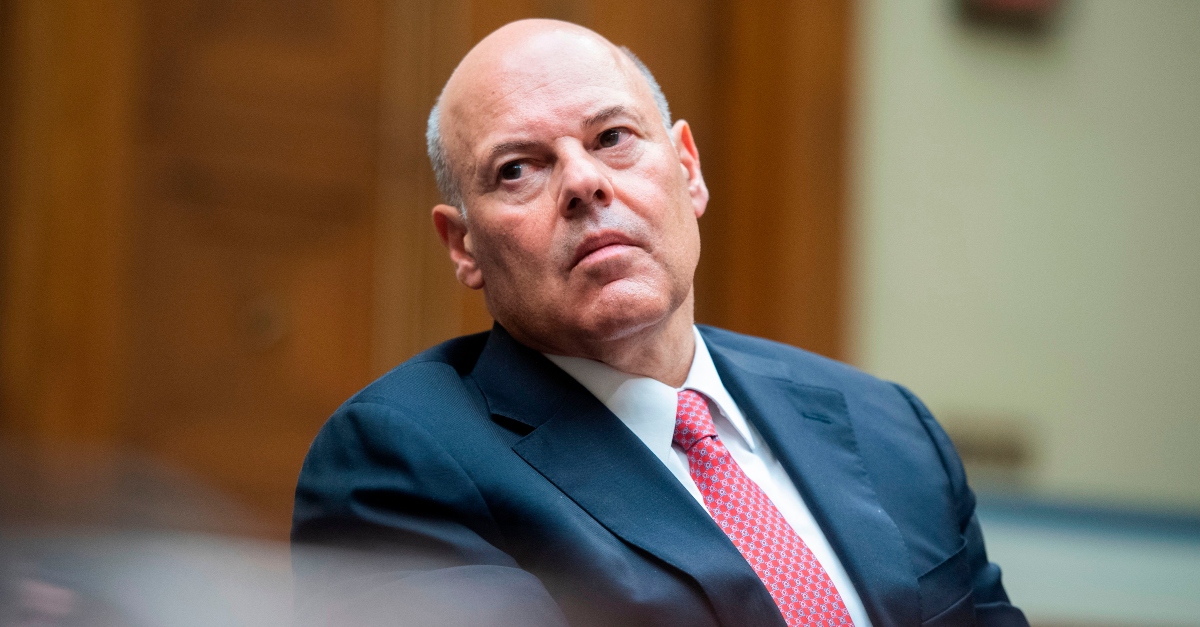By Richie Hertzberg |THE HILL
VIDEO An innovative new company is rescuing the damaged land — and people — of Appalachia
Jocelyn Sheppard hasn’t always been a lavender and honey farmer. For more than a decade, she was the founding partner of a consulting firm that did market research, business planning and grant writing for tech startups and nonprofits. But something came up at work that pulled her into a completely different world.
“I was hired to write a grant to explore the feasibility of growing lavender on reclaimed coal mine land,” Sheppard recalls, “When the grant was winding down, I had the idea that this would be great as a commercial opportunity.”
This year, Sheppard’s notion became a reality in Boone County, W.Va. Her new company, Appalachian Botanical, is now a 35-acre lavender farm and apiary located in the bowl of an old strip mine.
It’s a venture of second chances in more than one way.
The Boone County area was once a busy hub for strip mines. But as the world pivoted to natural gas, those coal mines were no longer financially feasible to operate, so the mining companies walked away. The pH balance of the soil they left behind doesn't have the nutrients to support most vegetation, leaving acres of pitted hillsides and valleys. Fortunately, there is one beautiful purple plant that is even tougher than the rocky terrain.
Sheppard acquired a 15-year agricultural lease from the Penn Virginia Operating Company, the landowner of an old strip mine. Without any competition, she pays just a nominal annual rent as well as royalties based on gross sales. It's a godsend for the mining company, which is only able to reclaim the bond they have on the site when the West Virginia Department of Environmental Protection decides the land has been restored and is productive. So instead of having to plant trees, which take many years to be deemed productive, Penn Virginia Operating Co. is letting Appalachian Botanical do the reclamation work faster and cheaper.
But the second lease on life isn't for the land alone.
“One of the reasons that this business has been so important to me is there are people out there who need second chances,” Sheppard says. “While maybe they’ve made some bad decisions in life, it’s not entirely their fault they were born into poverty or born into an area where the jobs are few and far between. So helping them come back from the problems they’ve experienced so they can be productive members of society, that's an extremely attractive proposition to me.”
Adam, a crew lead at the company, is a formerly incarcerated resident of Boone County who is especially grateful for the opportunity he’s been given at Appalachian Botanical.
“I’m from a small town here in Boone county," he says. "It’s a rough part of town. There’s not too much to do other than get in trouble. There’s not a whole lot of jobs around here so there was nothing really looking forward or bright. So I just hung out with friends, started working construction around 14 or 15 years old, and I made bad decisions on bad decisions. Ultimately put me in jail. I’ve been in and out of jail since I was about 12 years old. I started using drugs and I caught a charge in 2014 which put me into a drug court program."
"Appalachian Botanical is a really great company," he continues. "They don’t hold your past against you, they’re only worried about what you can do for yourself and what you can do for the company. As long as you show up for work, they want to help you succeed. They want to help you get through all the stuff that’s been on you. Loosen up the weight that’s been on your shoulders.”
It doesn’t stop there. Sheppard believes that mental health and recovery is as important as financial stability. So Appalachian Botanical is working with Devaraj Behavior Healthcare to provide recovery service therapy to employees struggling with addiction and substance abuse.
“In this area there are very limited services for someone in addiction or someone with mental health issues," says Kimberly Holstein, who is the onsite liaison and also Director of Programs and Operations with Devaraj. "Our therapists are able to come in and help provide those therapy services. We’re finding that has improved their work performance, because they’re able to come in with a clear mind.”
Appalachian Botanical is a zero-waste company--every part of the lavender plant is used for their products. They sell body creams, aromatherapy products, food products like lavender honey, and home goods products as well. They can be found at https://shop.appalachianbotanical.com/, as well as a number of boutique stores across West Virginia.
Jocelyn Sheppard hasn’t always been a lavender and honey farmer. For more than a decade, she was the founding partner of a consulting firm that did market research, business planning and grant writing for tech startups and nonprofits. But something came up at work that pulled her into a completely different world.
“I was hired to write a grant to explore the feasibility of growing lavender on reclaimed coal mine land,” Sheppard recalls, “When the grant was winding down, I had the idea that this would be great as a commercial opportunity.”
This year, Sheppard’s notion became a reality in Boone County, W.Va. Her new company, Appalachian Botanical, is now a 35-acre lavender farm and apiary located in the bowl of an old strip mine.
It’s a venture of second chances in more than one way.
The Boone County area was once a busy hub for strip mines. But as the world pivoted to natural gas, those coal mines were no longer financially feasible to operate, so the mining companies walked away. The pH balance of the soil they left behind doesn't have the nutrients to support most vegetation, leaving acres of pitted hillsides and valleys. Fortunately, there is one beautiful purple plant that is even tougher than the rocky terrain.
Sheppard acquired a 15-year agricultural lease from the Penn Virginia Operating Company, the landowner of an old strip mine. Without any competition, she pays just a nominal annual rent as well as royalties based on gross sales. It's a godsend for the mining company, which is only able to reclaim the bond they have on the site when the West Virginia Department of Environmental Protection decides the land has been restored and is productive. So instead of having to plant trees, which take many years to be deemed productive, Penn Virginia Operating Co. is letting Appalachian Botanical do the reclamation work faster and cheaper.
But the second lease on life isn't for the land alone.
“One of the reasons that this business has been so important to me is there are people out there who need second chances,” Sheppard says. “While maybe they’ve made some bad decisions in life, it’s not entirely their fault they were born into poverty or born into an area where the jobs are few and far between. So helping them come back from the problems they’ve experienced so they can be productive members of society, that's an extremely attractive proposition to me.”
Adam, a crew lead at the company, is a formerly incarcerated resident of Boone County who is especially grateful for the opportunity he’s been given at Appalachian Botanical.
“I’m from a small town here in Boone county," he says. "It’s a rough part of town. There’s not too much to do other than get in trouble. There’s not a whole lot of jobs around here so there was nothing really looking forward or bright. So I just hung out with friends, started working construction around 14 or 15 years old, and I made bad decisions on bad decisions. Ultimately put me in jail. I’ve been in and out of jail since I was about 12 years old. I started using drugs and I caught a charge in 2014 which put me into a drug court program."
"Appalachian Botanical is a really great company," he continues. "They don’t hold your past against you, they’re only worried about what you can do for yourself and what you can do for the company. As long as you show up for work, they want to help you succeed. They want to help you get through all the stuff that’s been on you. Loosen up the weight that’s been on your shoulders.”
It doesn’t stop there. Sheppard believes that mental health and recovery is as important as financial stability. So Appalachian Botanical is working with Devaraj Behavior Healthcare to provide recovery service therapy to employees struggling with addiction and substance abuse.
“In this area there are very limited services for someone in addiction or someone with mental health issues," says Kimberly Holstein, who is the onsite liaison and also Director of Programs and Operations with Devaraj. "Our therapists are able to come in and help provide those therapy services. We’re finding that has improved their work performance, because they’re able to come in with a clear mind.”
Appalachian Botanical is a zero-waste company--every part of the lavender plant is used for their products. They sell body creams, aromatherapy products, food products like lavender honey, and home goods products as well. They can be found at https://shop.appalachianbotanical.com/, as well as a number of boutique stores across West Virginia.
Published on Apr 30, 2021

















